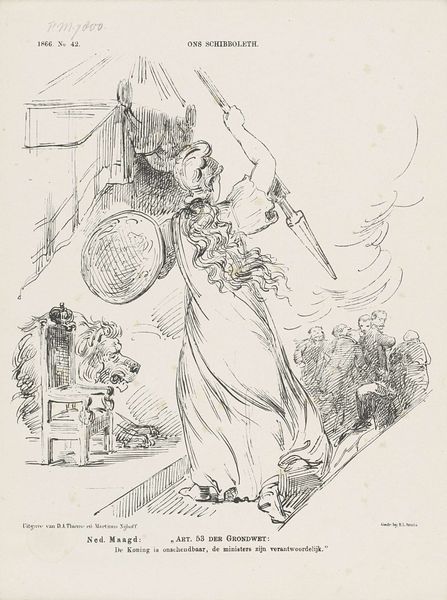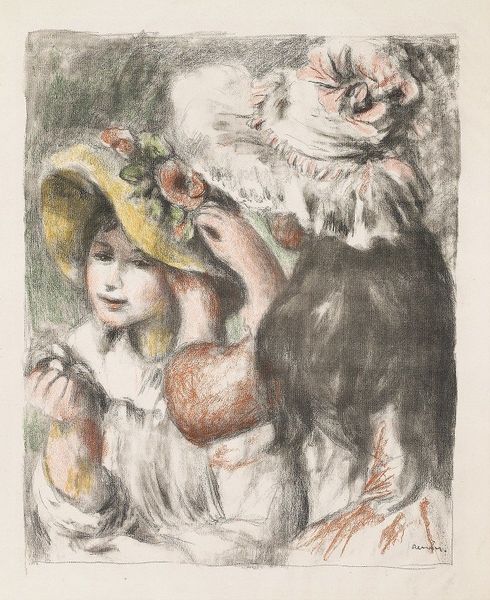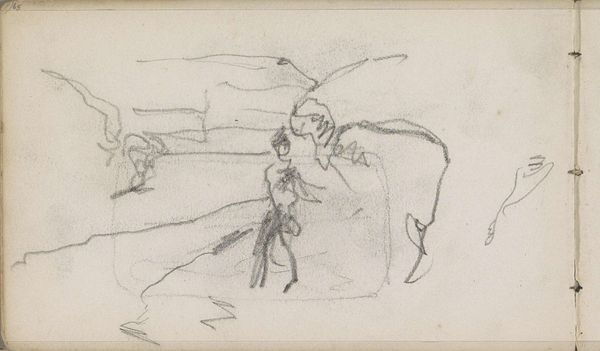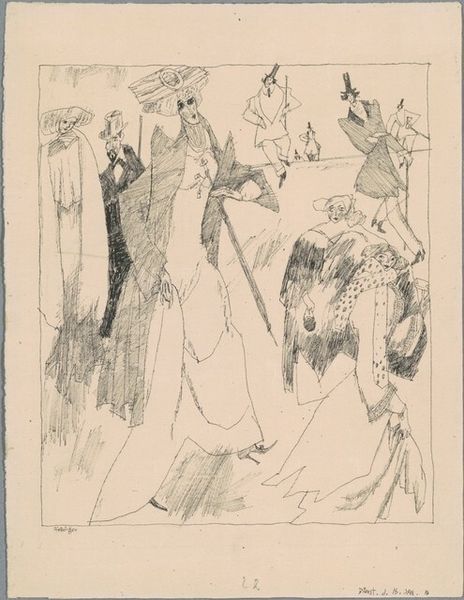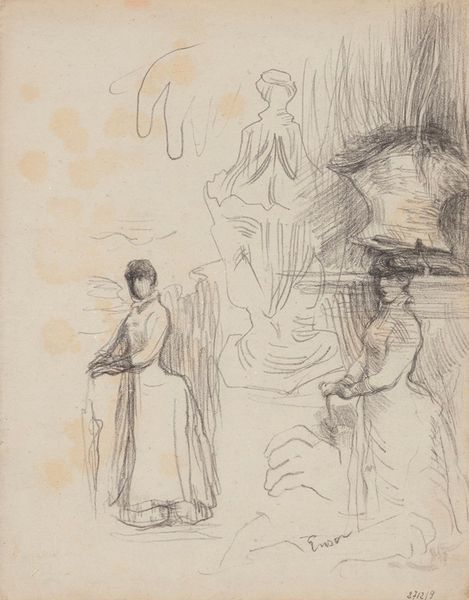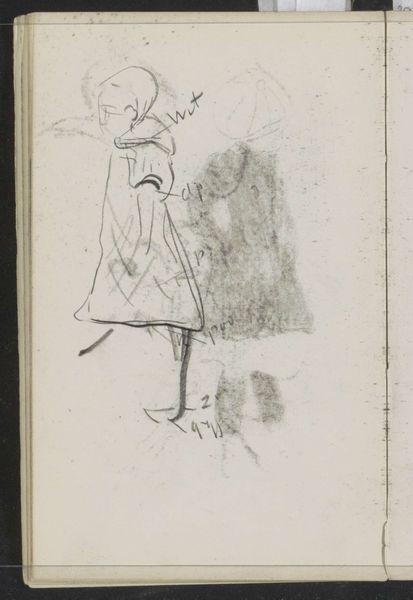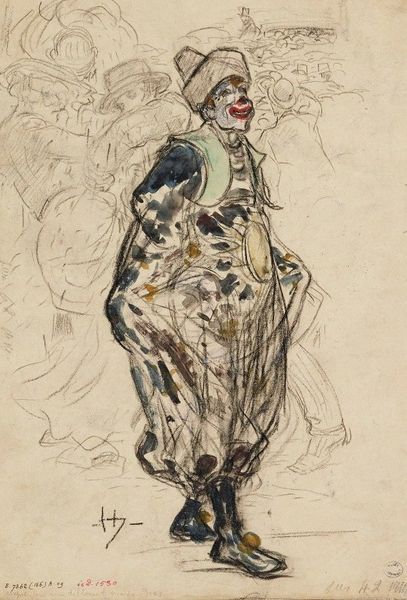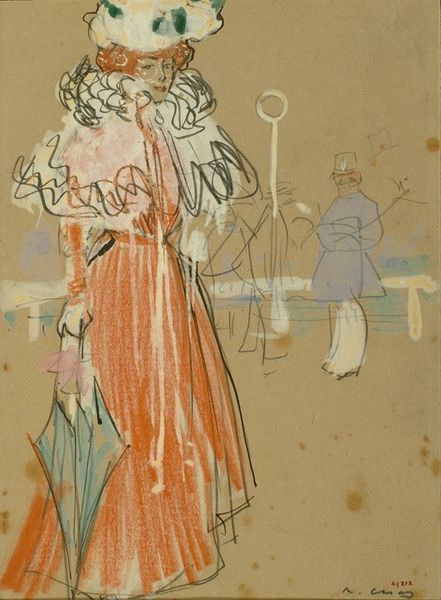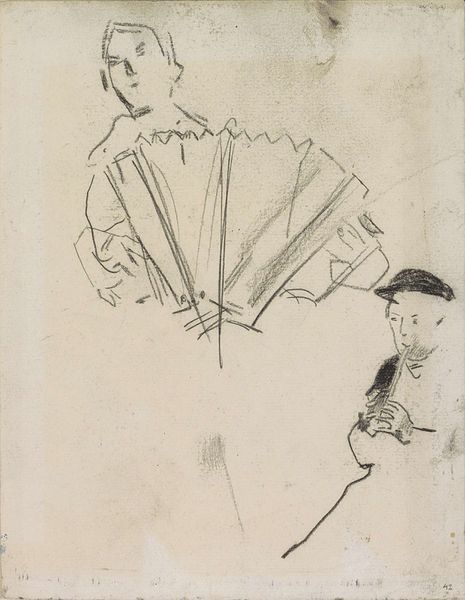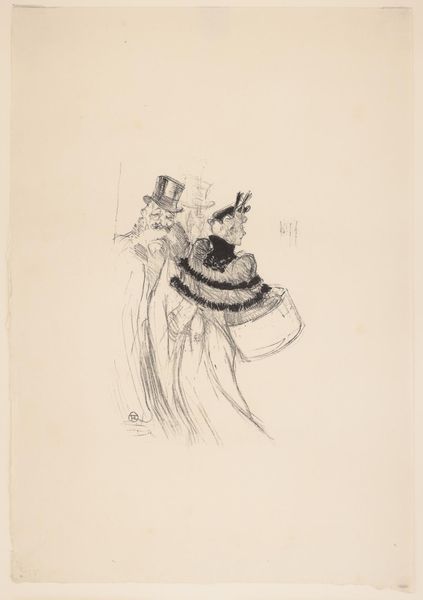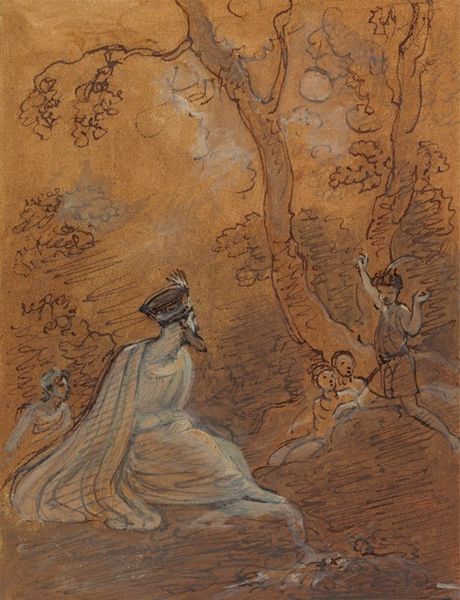
drawing
#
drawing
#
light pencil work
#
incomplete sketchy
#
personal sketchbook
#
ink drawing experimentation
#
sketchbook drawing
#
watercolour bleed
#
watercolour illustration
#
sketchbook art
#
fantasy sketch
#
watercolor
Dimensions: overall: 40 x 29.9 cm (15 3/4 x 11 3/4 in.)
Copyright: National Gallery of Art: CC0 1.0
Curator: Here we have Imre Reiner’s “Cyrano and a Clown,” created in 1932. It's rendered using watercolor and drawing techniques. What strikes you first about this piece? Editor: The raw, unfinished quality is immediately apparent. The color palette, dominated by faded reds and blues, creates an almost melancholic atmosphere. The figures appear as though they might dissolve back into the paper at any moment. Curator: Indeed. Look closely, and you will appreciate the interesting mix of watercolor bleed with light pencil work, something you might expect to find in a personal sketchbook of the time. What kind of labor do you think produced these color patterns and incomplete figures? Editor: The deliberate "sketchiness," achieved through quick, light lines, feels very self-conscious of its own production. Curator: Perhaps we could delve into the context? This was the period between the wars. Artists wrestled with trauma while attempting to depict modern life. Does knowing this inform how you now view the image? Editor: Yes. If we see the figures not as characters but as studies in human vulnerability rendered with unstable materials—watercolor specifically, given its capacity to fade or be washed away, reinforces this idea. There’s a structural fragility to the piece, it captures impermanence perfectly. Curator: Considering the potential theatrical allusion of the title, this may point to the artist engaging in some critical commentary of the stage or even societal roles, where behind the spectacle, lies something far more delicate. I wonder, were art supplies more widely available or sourced through new channels during the 1930s? What would it have cost Reiner to put this watercolor together? Editor: These formal relationships enhance the feeling of unease I noticed at first glance. In light of what we've observed, perhaps the apparent crudeness of the rendering is also an indicator that everything we understand to be sturdy is indeed subject to fragmentation. Curator: Thank you. Seeing these processes and techniques alongside those concerns from history—class, access, war—can open up some intriguing narratives within art production. Editor: A very compelling artwork that invites us to deconstruct appearance and meaning—how things are made visible—ultimately showing the raw core underneath.
Comments
No comments
Be the first to comment and join the conversation on the ultimate creative platform.
